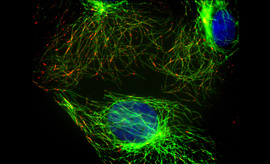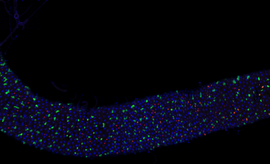Mutations in the V‐ATPase Assembly FactorVMA21Cause a Congenital Disorder of Glycosylation With Autophagic Liver Disease
Background and Aims
Vacuolar H+‐ATP complex (V‐ATPase) is a multisubunit protein complex required for acidification of intracellular compartments. At least five different factors are known to be essential for its assembly in the endoplasmic reticulum (ER). Genetic defects in four of these V‐ATPase assembly factors show overlapping clinical features, including steatotic liver disease and mild hypercholesterolemia. An exception is the assembly factor vacuolar ATPase assembly integral membrane protein (VMA21), whose X‐linked mutations lead to autophagic myopathy.
Approach and Results
Here, we report pathogenic variants in VMA21 in male patients with abnormal protein glycosylation that result in mild cholestasis, chronic elevation of aminotransferases, elevation of (low‐density lipoprotein) cholesterol and steatosis in hepatocytes. We also show that the VMA21 variants lead to V‐ATPase misassembly and dysfunction. As a consequence, lysosomal acidification and degradation of phagocytosed materials are impaired, causing lipid droplet (LD) accumulation in autolysosomes. Moreover, VMA21 deficiency triggers ER stress and sequestration of unesterified cholesterol in lysosomes, thereby activating the sterol response element‐binding protein–mediated cholesterol synthesis pathways.
Conclusions
Together, our data suggest that impaired lipophagy, ER stress, and increased cholesterol synthesis lead to LD accumulation and hepatic steatosis. V‐ATPase assembly defects are thus a form of hereditary liver disease with implications for the pathogenesis of nonalcoholic fatty liver disease.




